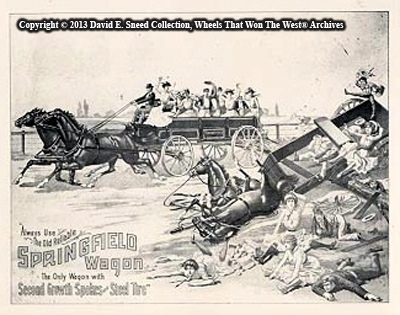Time never rests, though, and sometime back in the1940’s, this tired workhorse was pulled into the barn for the last time. Sitting silent and alone through anothersixty or seventy years of freezing winters and hot, humid summers, the wagonhad been a favorite target of mud daubers, mice, dust, and birds. Not to be outdone, the earth had slowly anddeliberately devoured the lowermost felloes. The aged tires were worn incredibly thin, rolled over the edges of thewheel rims like fresh dough in a pan. The constant pressure of hard ground and heavy loads had pushed thesteel tires to the brink while an even thinner pocketbook had kept them frombeing replaced.
Peering over the upper sideboard, the bed still heldthe dirty, brittle, and sweat-stained harness - last worn by a pair of muleslong since gone and forgotten. Incredibly, the wagon had escaped being adapted for service behind atractor. The near century-old tongue wassolid, uncut, and still accompanied by the original Springfield-builtdoubletree and singletrees. The seat satatop the box just as it was left. Through the years, it had been repeatedly attacked by water from a leakyroof. The end gates had also beenambushed by rain creeping in through another hole. Topping the rare, serial-numbered find, itwas equally surprising that two original bows had remained intact and with thewagon for almost a century.
For many, this vehicle is a piece of the past whosetime has come and gone. But, even with itsworking days done, it still has a lot to give. After all, totally original and complete pieces are increasingly hard tocome by. Beyond the historical valuegained by studying its makeup, this Springfield carries a rich, untouchedpatina applied over multiple generations. It’s a look and feel unmatched by new or restored pieces. By encompassing the years from 1872 through1952, the Springfield Wagon Company managed to outlast many of its toughestcompetitors, including legendary wagon firms like Studebaker, Cooper, Bain, FishBros., LaBelle, Mitchell, and many more. Ultimately, discoveries like this one not only reinforce Springfield’slegacy, but help preserve the literal roots of America. How many more can we save?


